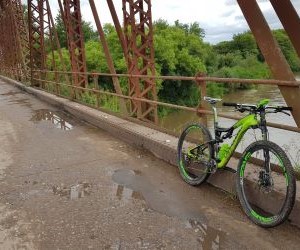Explore the best cycling and bike touring routes in Raleigh, from scenic greenways to wooded trails and smooth city rides—perfect for a vacation on two wheels.
HOW DO I BUILD STRENGTH FOR TECHNICAL MOUNTAIN BIKING?
Building strength is essential for technical mountain biking. Riders need a combination of muscular power, core stability, and endurance to navigate rocky trails, steep climbs, and tight turns safely and efficiently.

The importance of strength in technical mountain biking
Technical mountain biking requires more than cardiovascular fitness. Strength influences bike handling, stability, and injury prevention. Without adequate strength, riders may struggle on technical sections, lose control, or fatigue quickly.
Muscle groups involved
Key muscles include quadriceps, hamstrings, glutes, calves, and upper body muscles such as shoulders, biceps, and forearms. Core muscles stabilize the body during jumps, drops, and cornering.
Benefits of strength training
Strength training enhances climbing efficiency, improves balance, reduces fatigue, and helps riders absorb shocks from rough terrain. Strong muscles also lower the risk of overuse injuries and improve overall trail performance.
Enhances climbing and pedaling power
Improves bike control and stability
Reduces fatigue on long rides
Prevents injuries through better muscular support
Evaluating your baseline strength
Before starting a strength program, assess your current fitness level. Understanding your strengths and weaknesses helps create an effective, targeted training plan.
Functional movement assessment
Perform squats, lunges, push-ups, and planks to evaluate lower body, upper body, and core strength. Identify areas that feel weak or unstable, as these will benefit most from targeted training.
Trail performance review
Reflect on technical trail challenges. Do you struggle with steep climbs, cornering, or absorbing impacts on descents? Pinpointing specific weaknesses guides your strength training focus.
Perform squats, lunges, push-ups, and planks for assessment
Identify weak or unstable muscle groups
Evaluate specific trail challenges like climbs or drops
Use results to set training priorities
Building core stability for bike control
A strong core is essential for maintaining balance, absorbing impacts, and controlling the bike on technical terrain. Core strength supports every movement from climbing to jumping.
Key core exercises
Planks, side planks, Russian twists, and hanging leg raises strengthen the abdominal and oblique muscles. Stability ball exercises and anti-rotation drills enhance dynamic control during riding.
Integration with riding
Perform core exercises off the bike and apply stability drills on the bike. Practice track stands, controlled descents, and cornering techniques to translate strength gains into trail performance.
Planks and side planks for overall core strength
Russian twists and hanging leg raises for obliques
Stability ball exercises for dynamic control
Track stands and bike drills to apply strength on trail
YOU MAY ALSO BE INTERESTED






